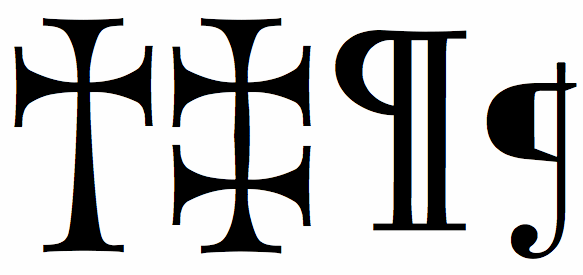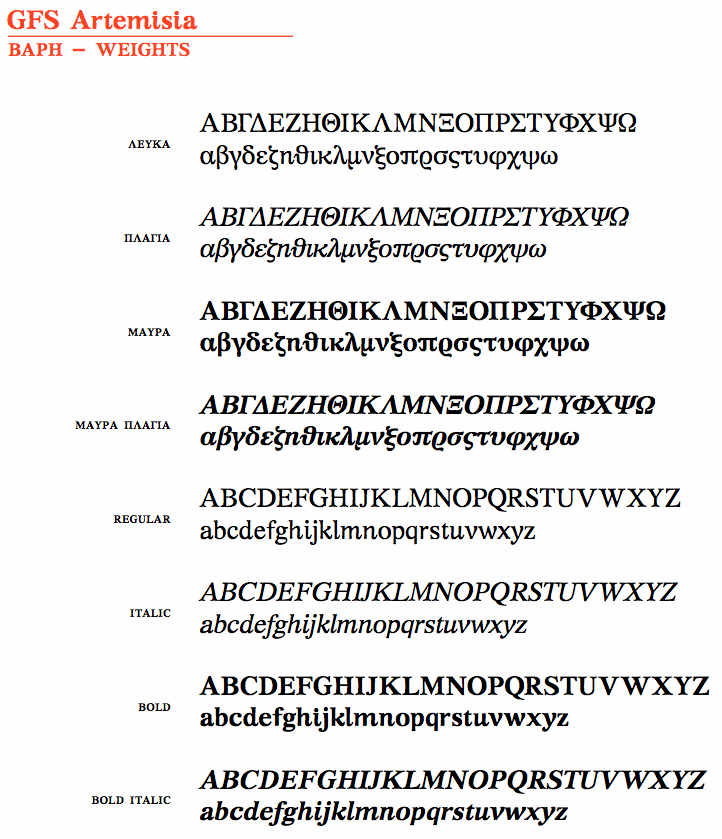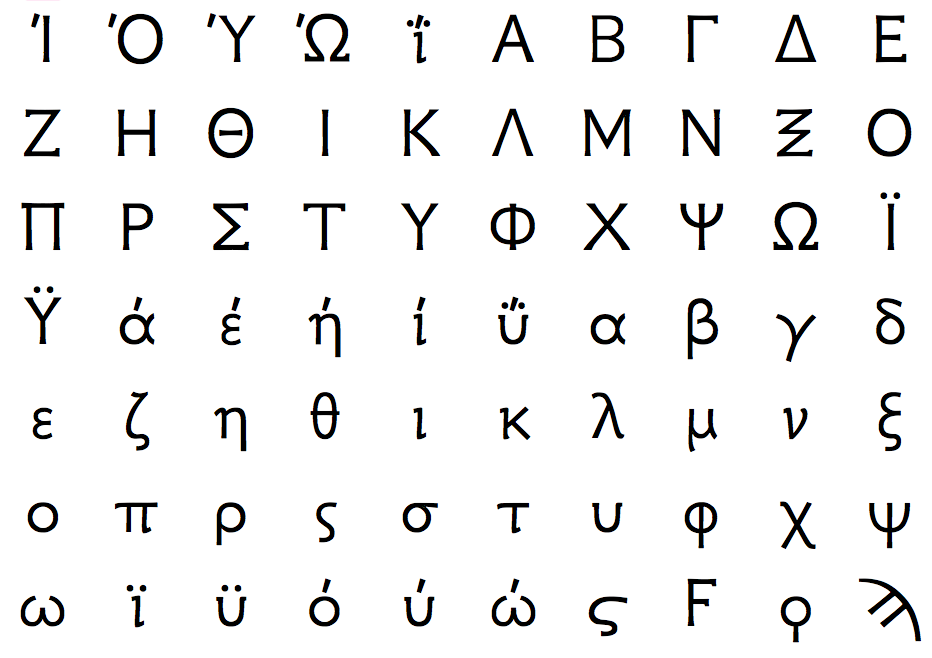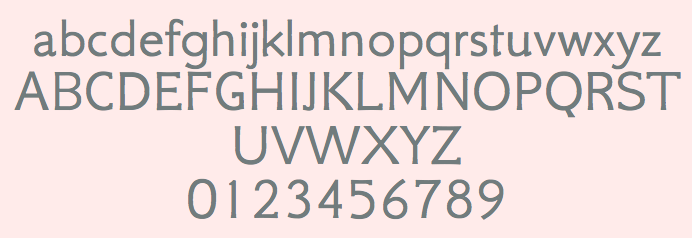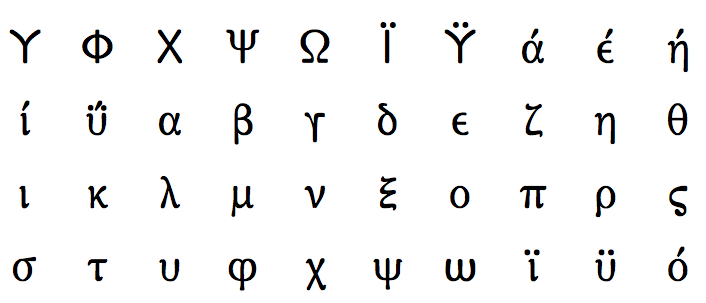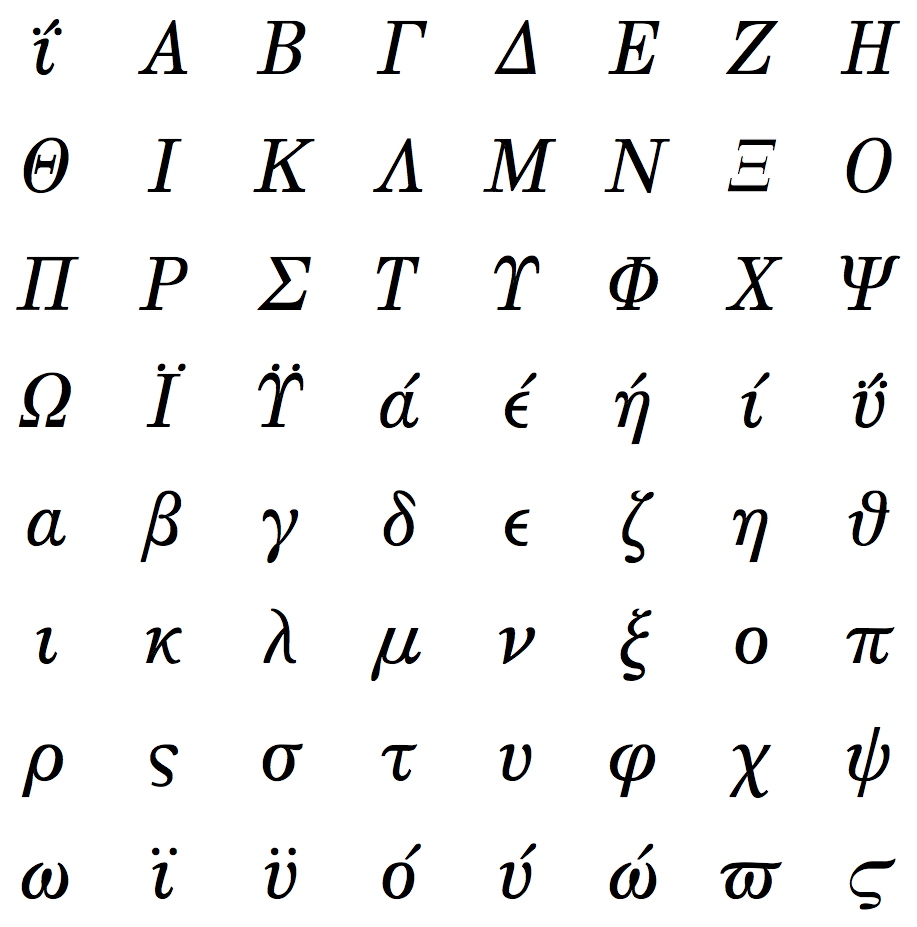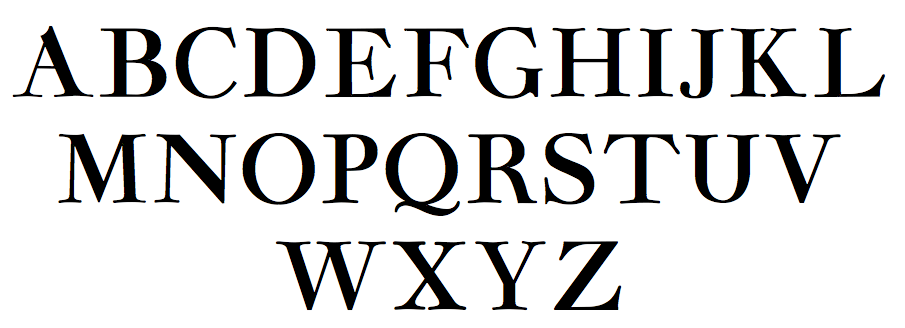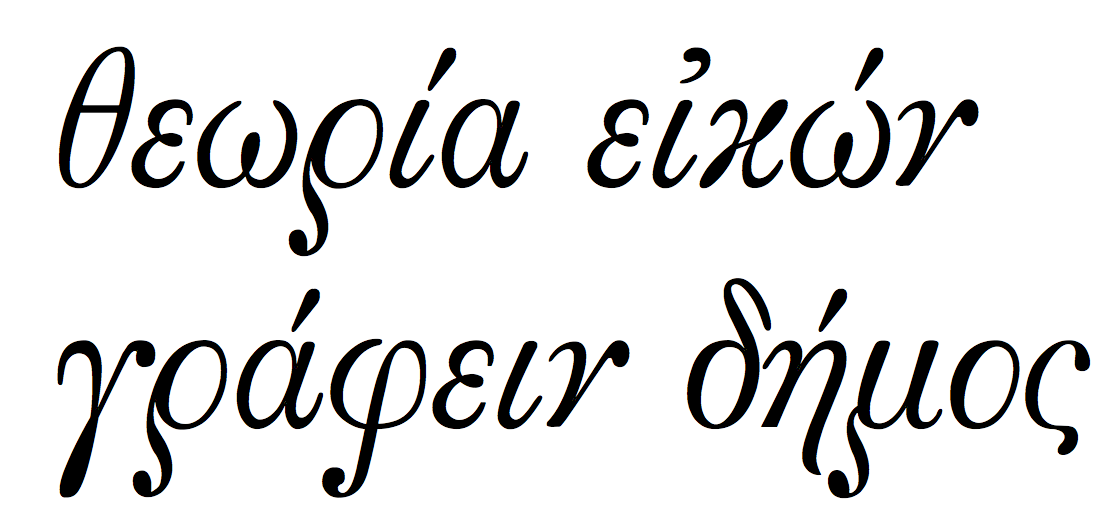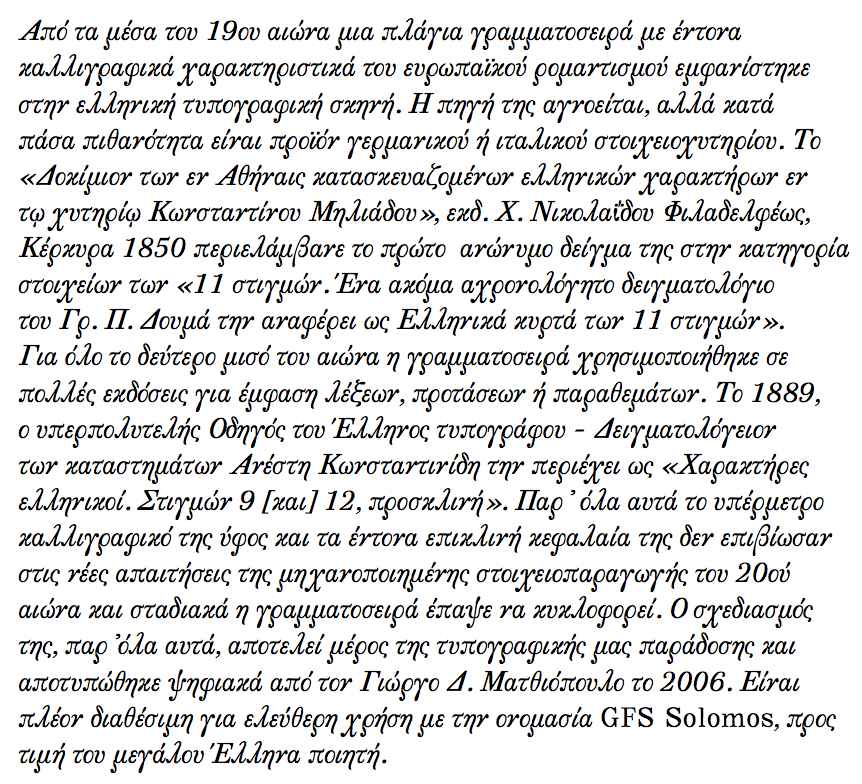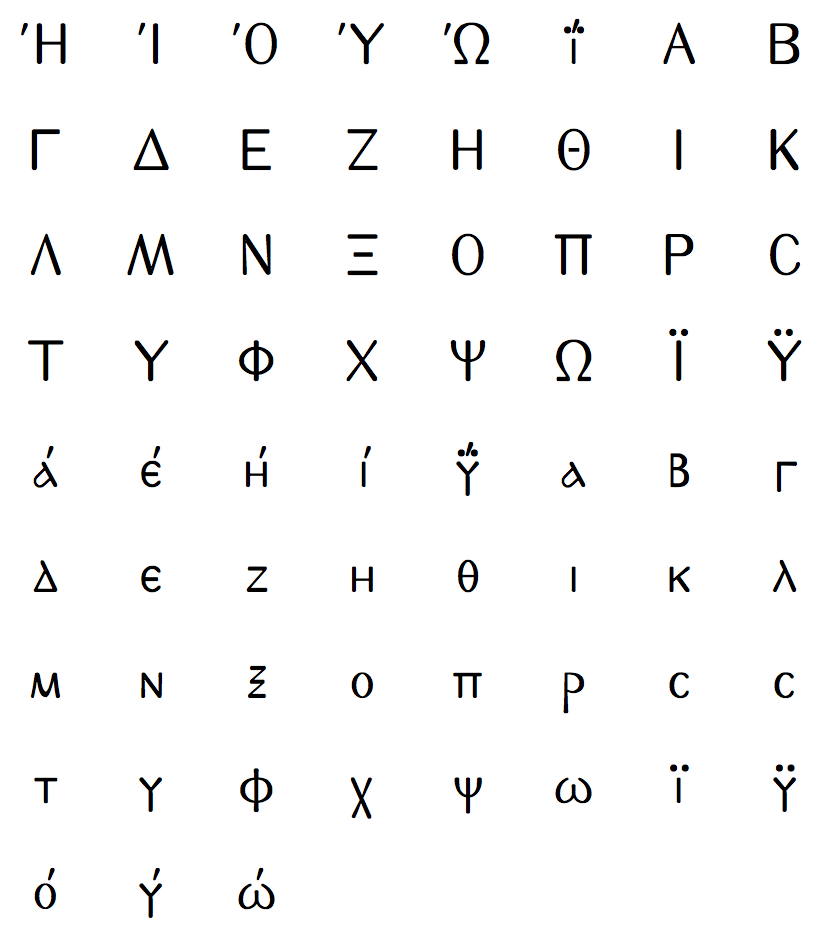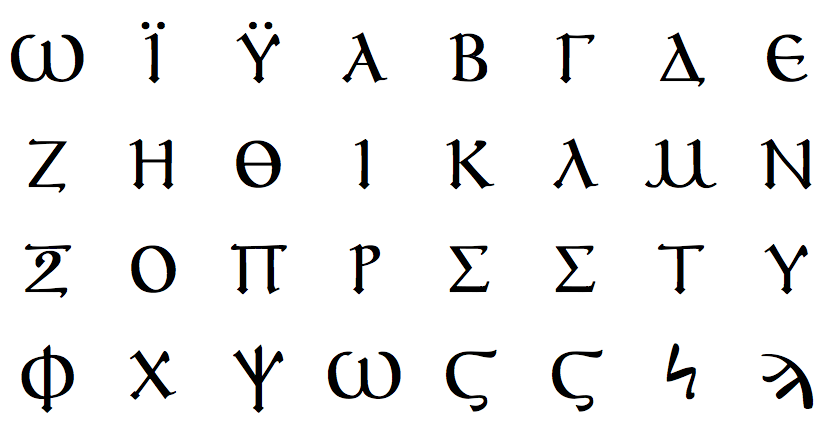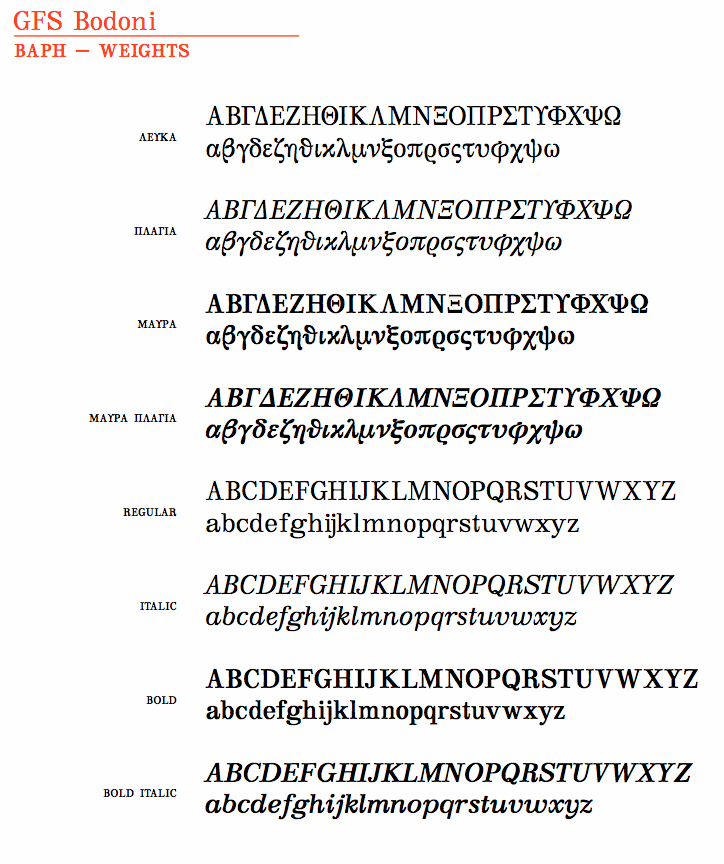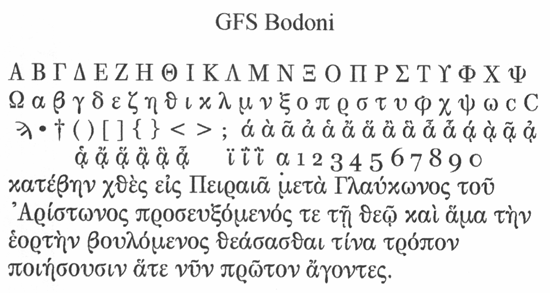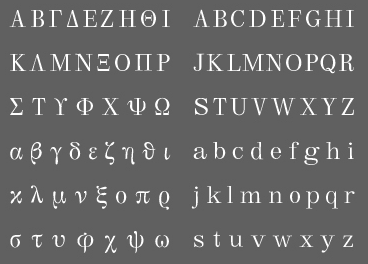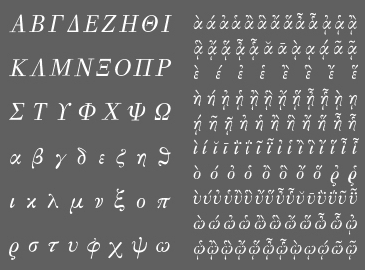|
George D. Matthiopoulos

Professor of Type design and Typography at the School of Graphic Arts of the Technical Institute of Athens. He also teaches at the Department of Graphic Design and Visual Communication, University of West Attica. He is head of the design team and a type designer at the Greek Font Society. He is the Art Director of Indigo Associates specializing in book design, corporate identity and typographic communication for museum exhibitions. He has written the textbook of the course Type History and Design for the Greek Open University (2002) and he has translated in Greek Viktor Scholderer's Greek Printing Types: 1465-1927 (Typophilia, 1995) and Robert Bringhurst's "The Elements of Typographic Style (University of Crete Press, 2001). Speaker at ATypI 2007 in Brighton and at ATypI 2008 in St. Petersburg (where he spoke about Greek book design, 15th-20th centuries). At the GFS, he was involved in these free high quality font families: - GFS Artemisia was designed by Takis Katsoulidis and digitized by George Matthiopoulos in 2001.
- GFS Didot (1994, a didone designed by Takis Katsoulidis and digitized by George Matthiopoulos; a matching Latin alphabet is based on Hermann Zapfs Palatino). Open Font Library link.
- GFS Bodoni (1992-1993) is a didone designed by Takis Katsoulidis and digitized in 2005 by George Matthiopoulos.
- GFS Olga (1995, a serif designed and digitized by George Matthiopoulos, based on the historical Porson Greek type (1803)).
- GFS Solomos (2006). He writes: From the middle of the 19th century an italic font with many calligraphic overtones was introduced into Greek printing. Its source is unknown, but it almost certainly was the product of a German or Italian foundry. In the first type specimen printed in Greece by the typecutter K. Miliadis (1850), the font was listed anonymously along others of 11pts and in the Gr. Doumas undated specimen appeared as 11pt Greek inclined. For most of the second half of the century the type was used extensively as an italic for emphasis in words, sentences or exerpts. In 1889, the folio size Type Specimen of Anestis Konstantinidis publishing, printing and type founding establishment also included the type as Greek inclined [9 & 12 pt]. Nevertheless, the excessively calligraphic style of the characters, combined with the steep and uncomfortable obliqueness of the capitals, was out of favour in the 20th century and the type did not survive the conformity of the mechanical type cutting and casting. The font has been digitally revived, as part of our typographic tradition, by George D. Matthiopoulos and is part of GFS type library under the name GFS Solomos, in commemoration of the great Greek poet of the 19th century, Dionisios Solomos.
- GFS Gazis (2007). These majuscule typefaces were made by George Matthiopoulos in 2006 and 2007: GFSAmbrosia, GFSEustace-Regular, GFSFleischman-Regular, GFSGaraldus, GFSJackson-Regular, GFSNicefore.
He writes: GFS Ambrosia has the main characteristics of the majuscule forms of the early Christian tradition while GFS Nicefore is a typical byzantine sample of the 5th-7th century period. GFS Jackson is an edition of the font cut, in 1788, by Joseph Jackson on commission by the Cambridge University in preparation of the edition of the Beza codex containing the New Testament from the 5th-6th century. Theodore Beza was the erudite scholar from Geneva who had given the codex as a gift to the University in 1581. GFS Eustace is a typical example of byzantine woodcut initials used in many similar forms in Italy for Greek editions of the Bible, Prayers and other theological literature from the 15th to 19th centuries. GFS Fleischman, on the contrary, is based on a typeface cut by Johann Michael Fleishman, typecutter of the Dutch Enschedé foundry in the baroque style that prevailed in the mid-18th century. - GFS Neohellenic (1993-2000, Takis Katsoulidis and George D. Matthiopoulos). They explain: In 1927, Victor Scholderer (British Museum Library curator), on behalf of the Society for the Promotion of Greek Studies, got involved in choosing and consulting the design and production of a Greek type called New Hellenic cut by the Lanston Monotype Corporation. He chose the revival of a round, and almost monoline type which had first appeared in 1492 in the edition of Macrobius, ascribable to the printing shop of Giovanni Rosso (Joannes Rubeus) in Venice. New Hellenic was the only successful typeface in Great Britain after the introduction of Porson Greek well over a century before. The type, since to 1930s, was also well received in Greece, albeit with a different design for Ksi and Omega. GFS digitized the typeface (1993-1994) funded by the Athens Archeological Society with the addition of a new set of epigraphical symbols. Later (2000) more weights were added (italic, bold and bold italic) as well as a Latin version. GFSNeohellenicMath was published in 2018: The font GFSNeohellenicMath was commissioned to the Greek Font Society (GFS) by the Graduate Studies program "Studies in Mathematics" of the Department of Mathematics of the University of the Aegean, located on the Samos island, Greece. The design copyright belongs to the main designer of GFS, George Matthiopoulos. The OpenType Math Table embedded in the font was developed by the Mathematics Professor Antonis Tsolomitis. The font is released under the latest OFL license, and it is available from the GFS site at http://www.greekfontsociety-gfs.gr. The font is an almost Sans Serif font and one of its main uses is for presentations, an area where (we believe) a commercial grade sans math font was not available up to now.
- GFS Philostratos (2008). A rounded Latin / Greek sans after Maurice Eduard Pinder's Griechische Antiqua.
- GFS Pyrsos (1995). He writes: This typeface first appeared in the late 20s and was used as an alternative italic type to the most commonly used Greek italics at the time, coming from Germany (Leipzig). The name commemorates the edition of the Greek encyclopaedia Pyrsos (1927-1933) from which the types were taken.
- GFS Goschen (2009): a Greek typeface named for the German publisher Georg Joachim Göschen, who, at the turn of the 19th century, saw to the creation of a new cursive type for use in an edition of the New Testament in Greek. The typeface was cut by Johann Prillwitz, and was influenced by the Greek types of Bodoni.
- GFS Decker (2007). This is a revival of an uncial Greek that was used by both Oxford and Cambridge University Press in the late 1800s, designed by Deckersche Giesserei in Germany. /UL>
|
EXTERNAL LINKS
George D. Matthiopoulos
Klingspor Museum page
MyFonts search
Monotype search
Fontspring search
Google search
INTERNAL LINKS
Greek/Coptic ⦿
Type designers ⦿
Type designers ⦿
Modern style [Bodoni, Didot, Walbaum, Thorowgood, Computer Modern, etc.] ⦿
Mathematics fonts ⦿
|
